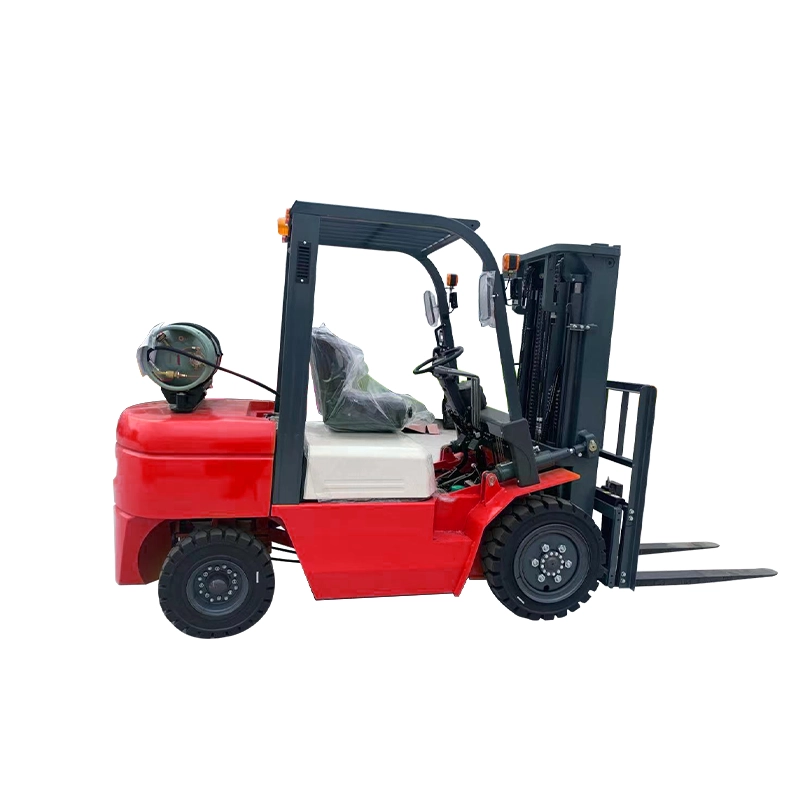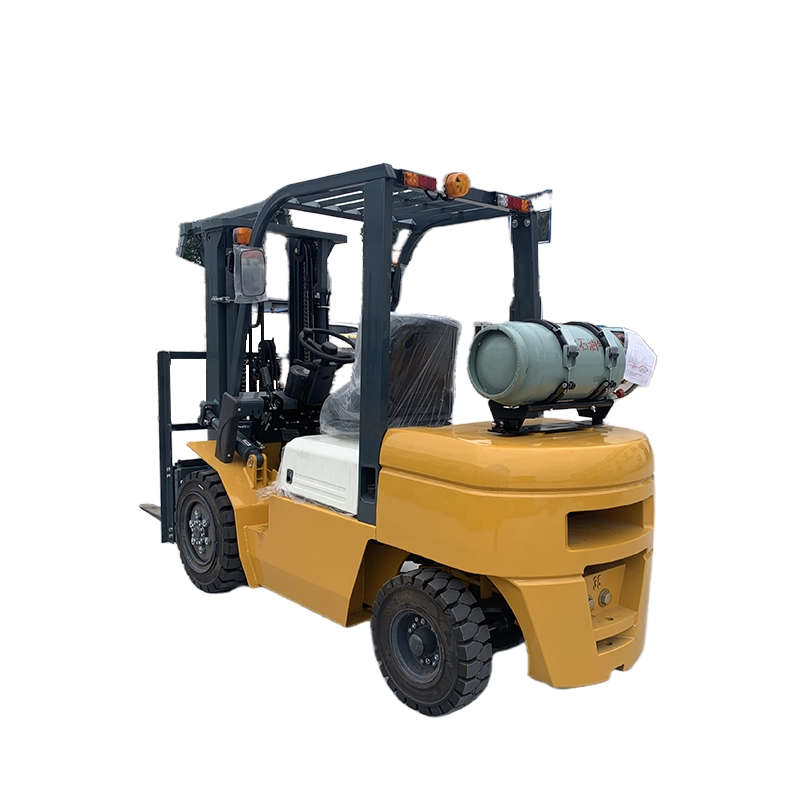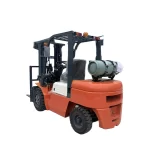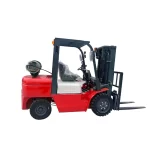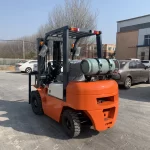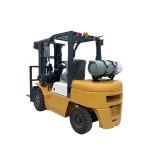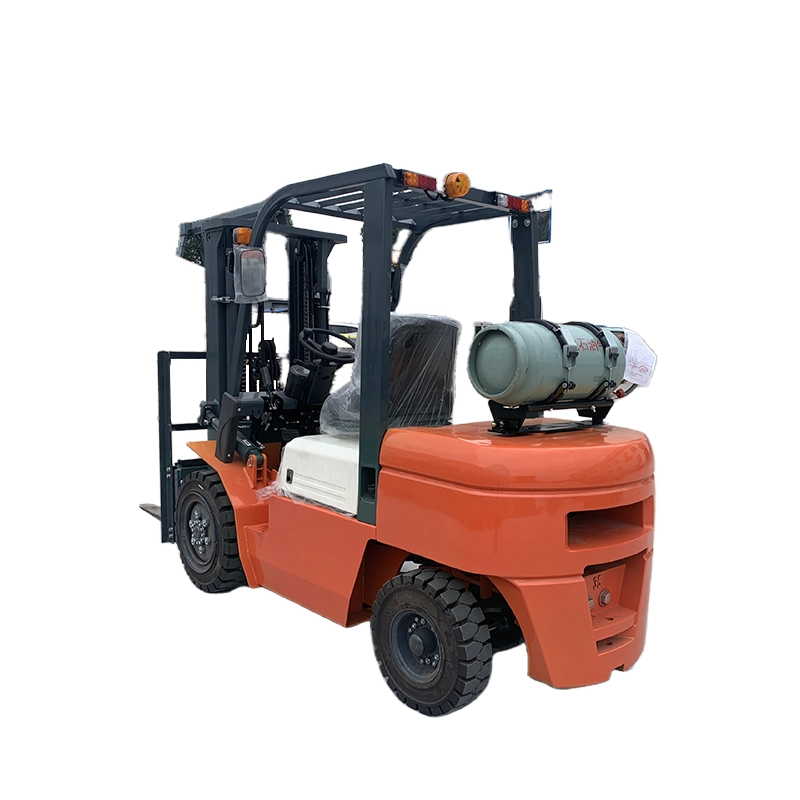
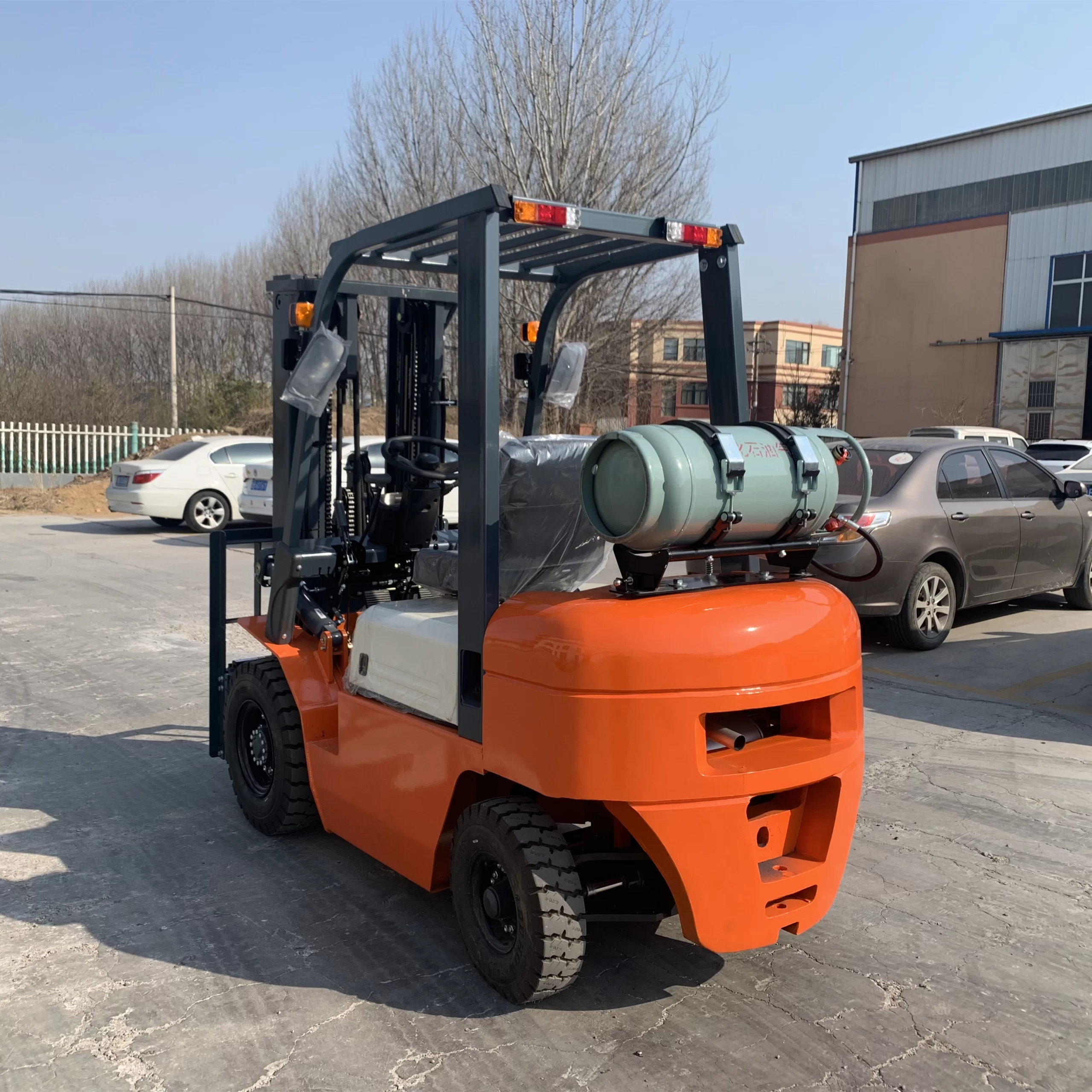
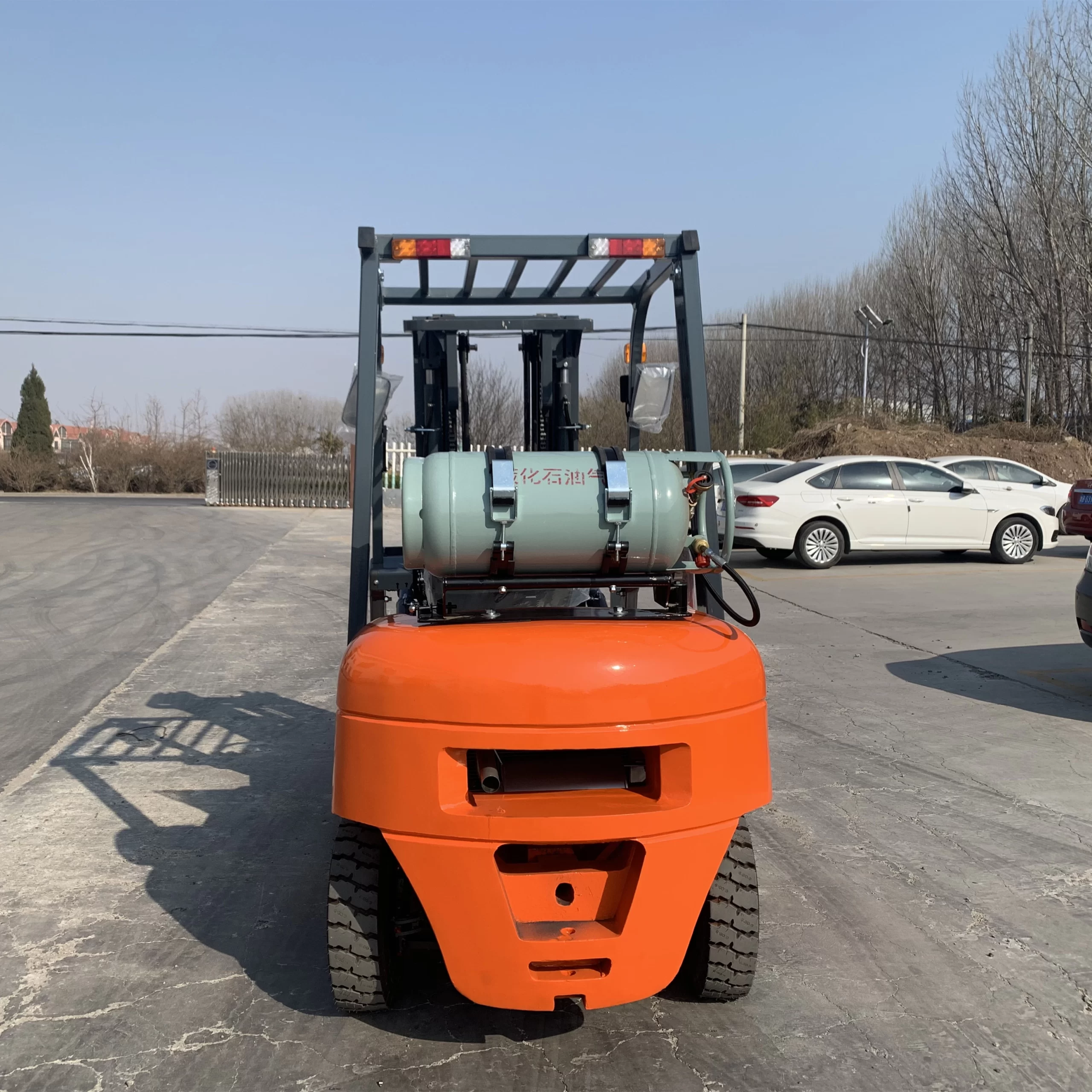
Gasoline, gas, and LPG forklifts are types of internal combustion engine (ICE) forklifts, each powered by different types of fuel. Here’s an overview of each:
1. Gasoline Forklifts:
Fuel Source: Powered by gasoline, these forklifts are known for their powerful engines.
Advantages:
High speed and power, making them ideal for outdoor applications and heavy-duty tasks.
Suitable for rough terrains and large warehouses.
Disadvantages:
Higher emissions compared to electric forklifts.
Higher fuel costs and operating expenses.
Requires good ventilation when used indoors due to carbon emissions.
2. Gas Forklifts (Natural Gas):
Fuel Source: Operates on compressed natural gas (CNG) or liquefied natural gas (LNG).
Advantages:Cleaner-burning than gasoline or diesel, with lower emissions.
Cheaper fuel costs compared to gasoline or diesel.
Suitable for both indoor and outdoor use with proper ventilation.
Disadvantages:
Requires specialized fueling stations or equipment.
Slightly lower power compared to gasoline or diesel models.
3. LPG Forklifts (Liquefied Petroleum Gas):
Fuel Source: Powered by LPG, typically propane.
Advantages:Lower emissions than gasoline and diesel, making them more suitable for indoor use (with ventilation).
Quicker refueling than electric forklifts.
Can be used in various environments, including indoor and outdoor.
Disadvantages:
Fuel costs may vary depending on the region.
Lower energy efficiency compared to electric forklifts.
Requires storage of LPG tanks, which can be a safety concern.
General Considerations:
Power and Performance: These forklifts provide more power and speed compared to electric models, which is ideal for heavy loads and long working hours.
Maintenance: They typically require more maintenance due to the complexity of internal combustion engines.
Environmental Impact: While gasoline and diesel forklifts produce more emissions, LPG and gas forklifts offer a cleaner alternative, though still not as eco-friendly as electric forklifts.
Each type of forklift offers different advantages based on fuel type, making them suitable for specific applications depending on the work environment and operational needs.

